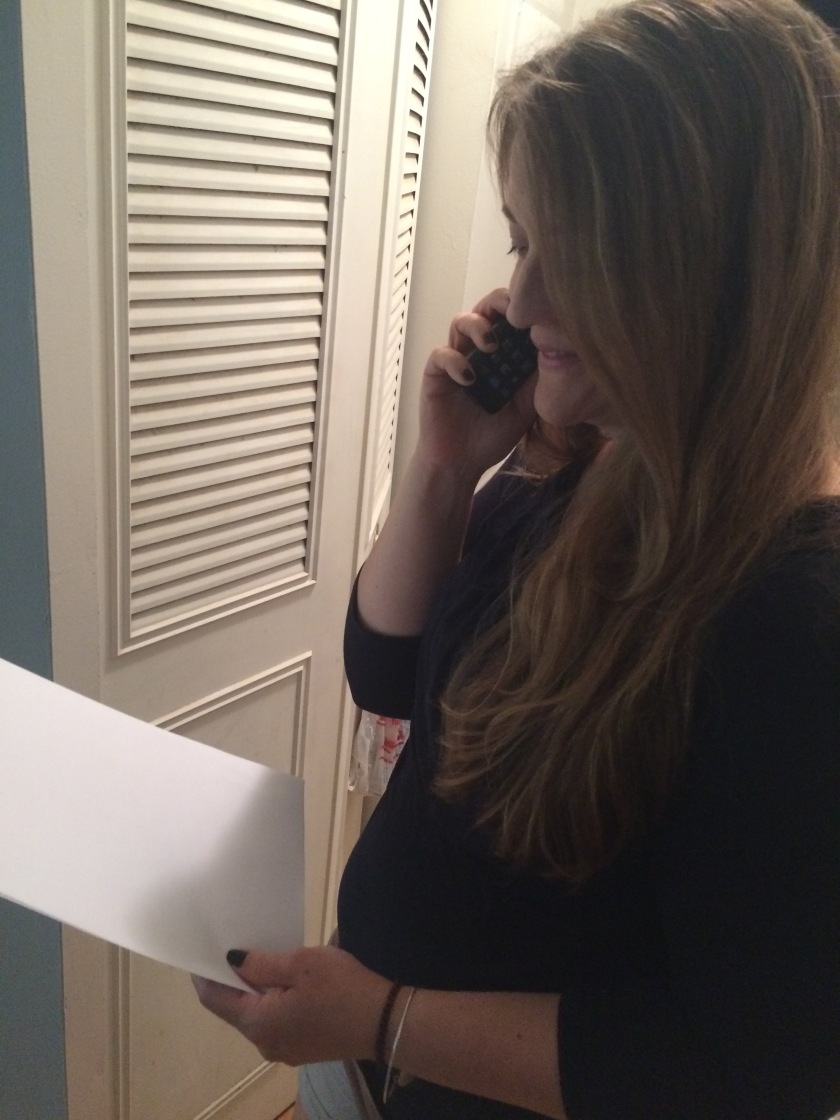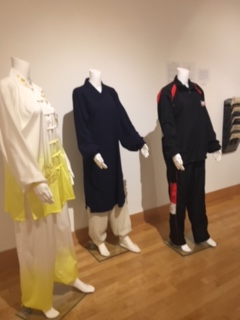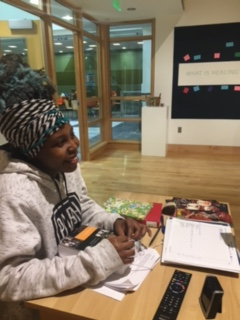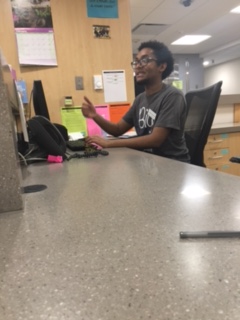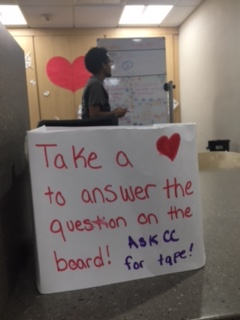By: Grace Hebron
She sits casually, legs folded and bare fingernails touching, in one of the College of Liberal Arts Building’s armchairs, where students can be found lounging and studying at all hours. “Maya,” is not her real name, but that of the woman who helped her escape an abusive relationship. She chose not to use her real name.
Maya is here after a weekly meeting of her course on Campus Sexual Violence, a topic personal to her as healing progresses, during some of the only free time in her week. Her average day as a music education major relentlessly pulls her in various directions. Nonetheless, Maya’s eyes are locked on mine with presence, patience, and no object of time.
“People like to tell me that they know what abusive relationships are like–but no, it didn’t start out with him hitting me,” said Maya, her serene composure admirably unwavering in her recollection. “It started out with him isolating me and controlling me–mentally, psychologically, emotionally.” Sexual abuse followed. “I always was very curious about things, but when I said no, I wanted it to be respected,” she said. “Then the physical [abuse came] and that continued on for about six months.” Maya is not alone. According to The National Domestic Violence Hotline, she represents one in three women in the United States who have experienced physical violence or sexual abuse in their lifetime.
In the early stages of Maya’s ongoing healing journey, she used social media as a coping tool, later finding that it did not suit her needs. A long period ensued that found Maya closed off to herself and those around her. She was in denial. “I was very against talking about it,” she said.
Maya attended a “Goddess workshop” in the early months of 2017, which targeted body image issues. This was the platform that empowered her to share her experience with others in a way that felt right to her. “I felt compelled to tell my story because my problems with body image weren’t from growing up in a household where I didn’t feel loved,” she said. She comes from a body-positive household, where her mother, a feminist, proudly flaunts unshaven legs. “It came from an external source telling me I wasn’t good enough.”
As a queer woman, Maya thrived in a space full of individuals similar to her and decided to use the nourishing energy she found as a basis to seek additional spaces of empowerment. This, she said, is what led her to Sigma Alpha Iota, the female fraternity colony at Towson University, for which she currently serves as diversity chair.
Maya, discovered the musician’s fraternity through a classmate. “The girl who had been colonizing [the fraternity] made an announcement in our class,” she said. Maya was attracted to Sigma Alpha Iota as a fraternity exclusively for female musicians “In my healing journey, I really wanted to be around female energy and to kind of have a safe space to express myself as a woman and as a musician.”
As diversity chair for Sigma Alpha Iota, Maya decided to bring more to the table than the social justice workshops that her position requires her to teach. This month, she led her fraternity in a professional development workshop dealing with social media guidelines, sharing trauma using public platforms, and the effects of PTSD and trauma on professional behavior. “Trauma is something that many people experience in their lifetime in many different, varying degrees,” Maya said. “[It] is not something specific to women, or specific to humans, even. Trauma can be experienced by any living creature.”
Maya’s workshop was meant to be survivor-friendly. “We wanted to kind of address the fact that we’re all on a healing journey from our varying traumas in life,” she said. But especially for us as musicians–as entrepreneurs and people who kind of have to build their own brand–in a lot of ways, it’s incredibly important for us to be cautious and thoughtful when it comes to what we put out on social media.”
Maya, who has found comfort in the logical absoluteness of biology while healing, used it to guide her workshop with empowerment. “I went through what trauma is–how it affects the brain and other bodily functions, what symptoms can look like, how long they can last…And then I talked about social media–how we are all cultivators of our own brand,” Maya said. She combined the two subjects as a way of sending a message of support and encouragement to anyone in her fraternity empowered to share their experience of trauma.
As a survivor, Maya acknowledges that for some, sharing trauma is an important part of healing. “There are some days when you are just like ‘I need to speak about what happened to me,’” Maya said. “It might just be because that day, you are feeling empowered and you want everyone to know that you are taking back your life. But we have to be careful in our objective and purpose for saying things.” Maya created a healthy list of social media guidelines for her fraternity to consider in terms of their audience that included activating privacy settings and considering sharing personal trauma in a private group chat instead of a public post.
“My abuser told me that I was never going to amount to anything.” Nearly six years following abuse, Maya is now a hardworking student with one degree under her belt. “Maya is a wonderfully caring and compassionate person,” said Carisse Philips, president of Sigma Alpha Iota. “She does so much to help this new organization get on its feet, and we couldn’t have had the successes we’ve had without her!” As her healing journey progresses, Maya is chasing her dreams and enjoying her busy life. “I’m working my ass off. I’m overwhelmed. But I wouldn’t have it any other way…and he will never get to know that,” she said. “I am going to be a successful person despite him and without him and in spite of him.”
Carisse Phillips: Cphill14@students.towson.edu


Maya By: Grace Hebron

Maya’s Facebook Feed
By: Grace Hebron
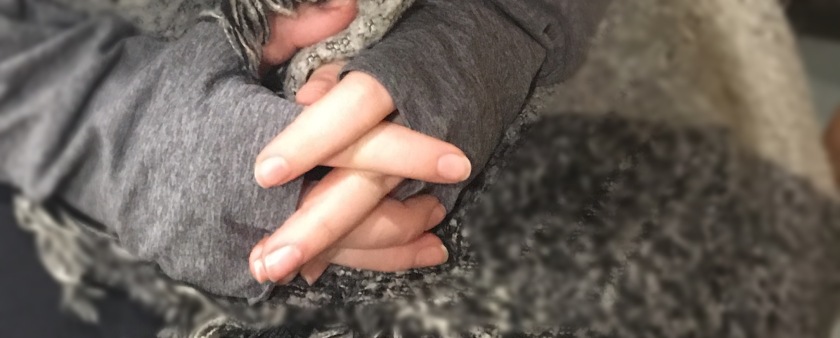
Fingers Crossed
By: Grace Hebron
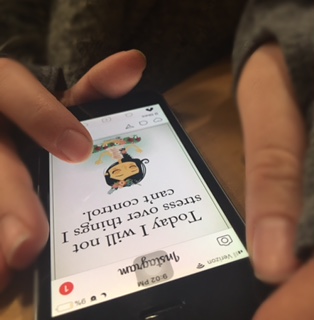
“Today, I will not stress over things I can’t control.” Maya’s Instagram Feed
By: Grace Hebron
